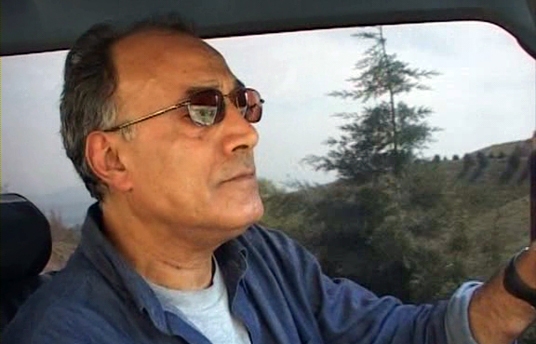Abbas Kiarostami’s ‘10 on Ten’
Aug 26, 2013

Scene from the film '10 on Ten'.
DFI is excited to present a partial retrospective of the work of Iranian director Abbas Kiarostami at the Museum of Islamic Art from 13 to 21 September. This is an excellent chance to immerse yourself in Kiarostami’s considerable body of work – whether you are already familiar with this master’s films, or you’re a newbie, the retrospective will provide a magnificent cinematic experience unlike any other. In anticipation of this presentation, we thought it a good idea to take a look at a couple of films involving Kiarostami that we are not showing, to give audiences a taste of what’s to come.
To prepare for this feast of brilliant cinema, there’s probably no better place to start than with ‘10 on Ten’ (2004), in which Kiarostami himself gives what amounts to a series of lessons in his own, very personal and intriguing approach to making films.
A reflection of Kiarostami’s massively successful 2002 film ‘Ten’, ‘10 on Ten’ is structured in 10 parts (hence the title, of course). In each segment, the director dissects his approach to the various elements of filmmaking, discussing the camera, sound, music, actors, location and so on.
Throughout, Kiarostami speaks to a static camera as he drives around the outskirts of Tehran – a set-up seen in many of his films, including ‘Taste of Cherry’ (1997), ‘The Wind Will Carry Us’ (1999) and ‘Certified Copy’ (2010) – and the only camera position (with a single exception) in ‘Ten’.
Kiarostami’s discussion of his methodology is casual and engaging as he explains why there is so much freedom in the use of the digital camera (it removes the restrictions of the larger film industry, he says – no investors and no special technical training allows anyone with a camera to make a film); why his use of non-actors is so important to his work (real people are far better at acting as people who are very much like themselves); why music in his films has become increasingly sparse (music has such intense emotional impact, he notes, that it is easy to overuse it, thereby overdirecting the audience’s emotional reaction).
As such, the director’s philosophy of cinema and filmmaking comes to the forefront. Perhaps the most telling of his suggestions, given the nature of his work, are his thoughts on how he considers his audience should engage with his films. Rather than taking the viewer hostage – as, he notes, the Hollywood model of blockbuster spectacles does – Kiarostami wishes the experience of watching his work to be the shared consideration of filmmaker and audience. Instead of telling us everything, he wants us to bring ourselves to his films, to work out some of the story in our own heads, based on our own life experiences.
It’s also incredible to realize that, with no formal film training whatsoever, Kiarostami has managed to create a body of work that has engaged cinema lovers around the world for 40 years, and has inspired filmmakers everywhere to take risks and approach filmmaking from a more personal, less industrial angle.
The film is not all serious though – Kiarostami is nothing if not very, very funny at times. It’s a joy to hear him talk through just why it is that his favourite place to shoot is in the front seats of a car (‘Two comfy seats, side by side!’ he says). And, after all his waxing philosophical and explaining the workings of his art, he undercuts everything – in a gently ironic way – by telling us that what he has just outlined is, after all, only his own way of making films: if film students want success as directors, they might do best to stick to the Hollywood model. Then, in a hilariously naughty moment, he gets out of the car and … well, let’s not spoil things. You should really see it for yourself.